Here’s a Thanksgiving STEM activity that kids are going to love! In this activity, kids will be weighing and measuring turkeys to find out which is the biggest bird.
This Thanksgiving math activity starts with a basic paper bag turkey craft. In fact, the craft is fun on its own and would look great on display.
But then you can turn it into a math activity by adding dried pinto beans to the bags as weight. Well, and really it’s a science activity too because measurement is SO important for scientific learning.
I made each of our turkeys a different weight by adding different amounts of beans and a different height by folding the bags differently. To make it fun, the heaviest turkey is NOT the tallest one!
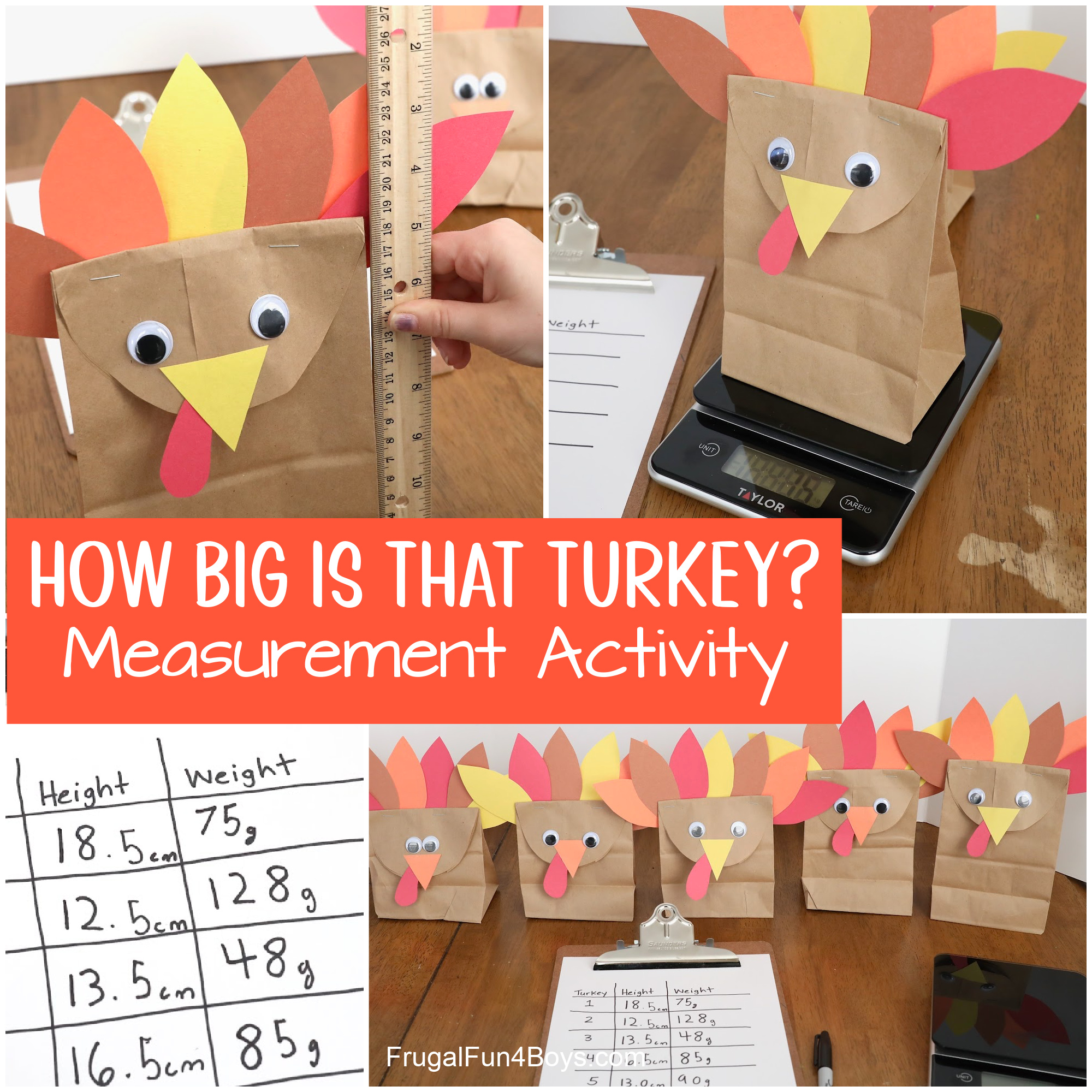
A friend suggested that we could have calculated turkey BMI. You really could, haha!
I would recommend this activity for 1st and 2nd graders (ages 6 – 8). It would make a fabulous math center!
This would also make a fun class activity. Let each student make their own turkey with the height and weight they choose. Then students can take turns measuring each other’s turkeys!
How to Make Paper Bag Turkeys
Supplies Needed for “How Big is that Turkey?” Thanksgiving Math Activity:
- Paper lunch bags
- Constructions paper – brown, red, orange, and yellow
- Googly eyes
- Glue – we used hot glue, but craft glue would be better in a classroom
- Scissors
- Dried pinto beans
- A ruler
- A digital scale – like this Digital Kitchen Scale for $12.59 on Amazon. We bought ours at a local grocery store for a similar price, and we use it ALL the time for science and math!
Step 1: To make the paper bag turkeys, cut out a beak and a wattle from construction paper. Then cut out some feathers.
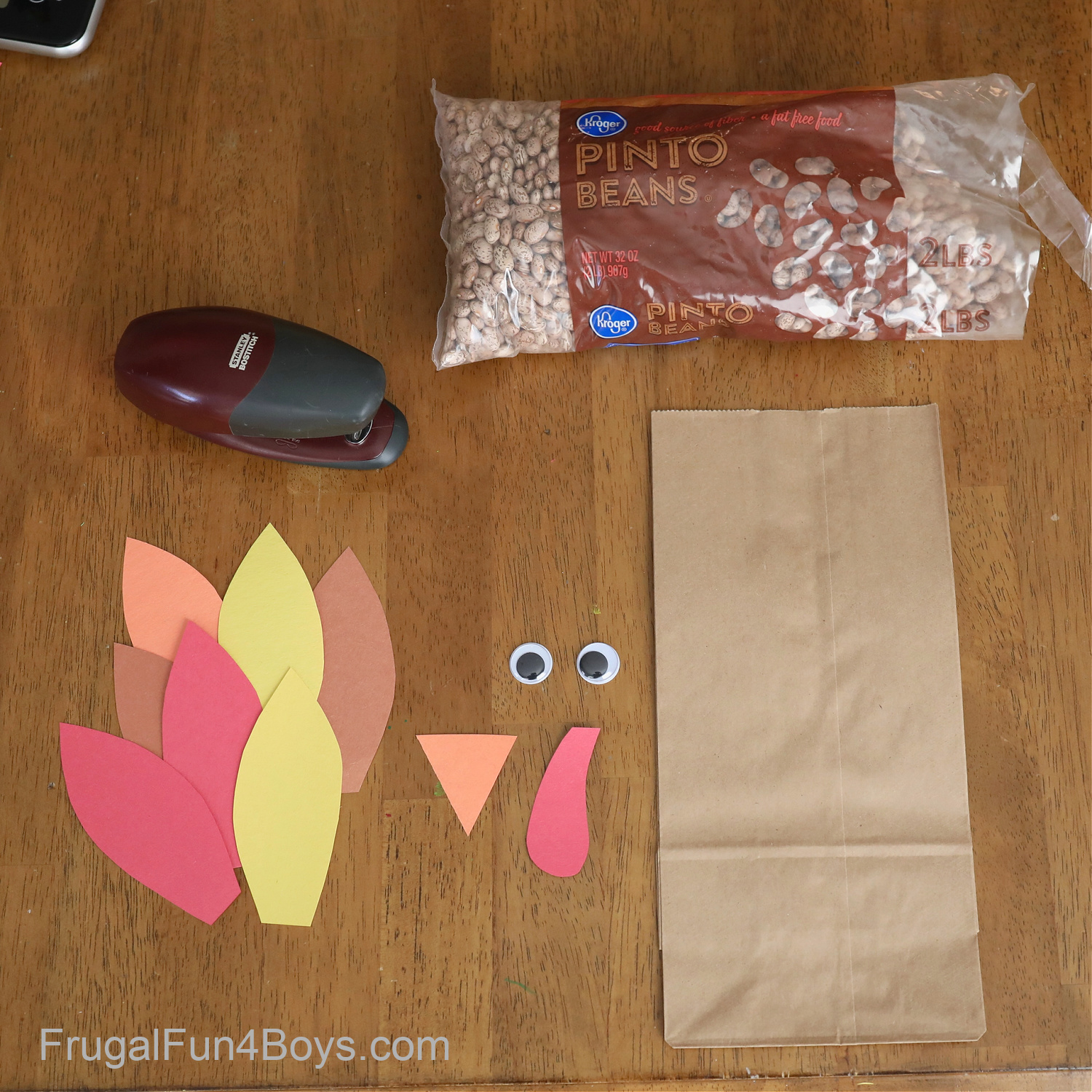
Step 2: Fold a paper lunch bag in half.

Step 3: Use scissors to cut a turkey head shape from the folded part.
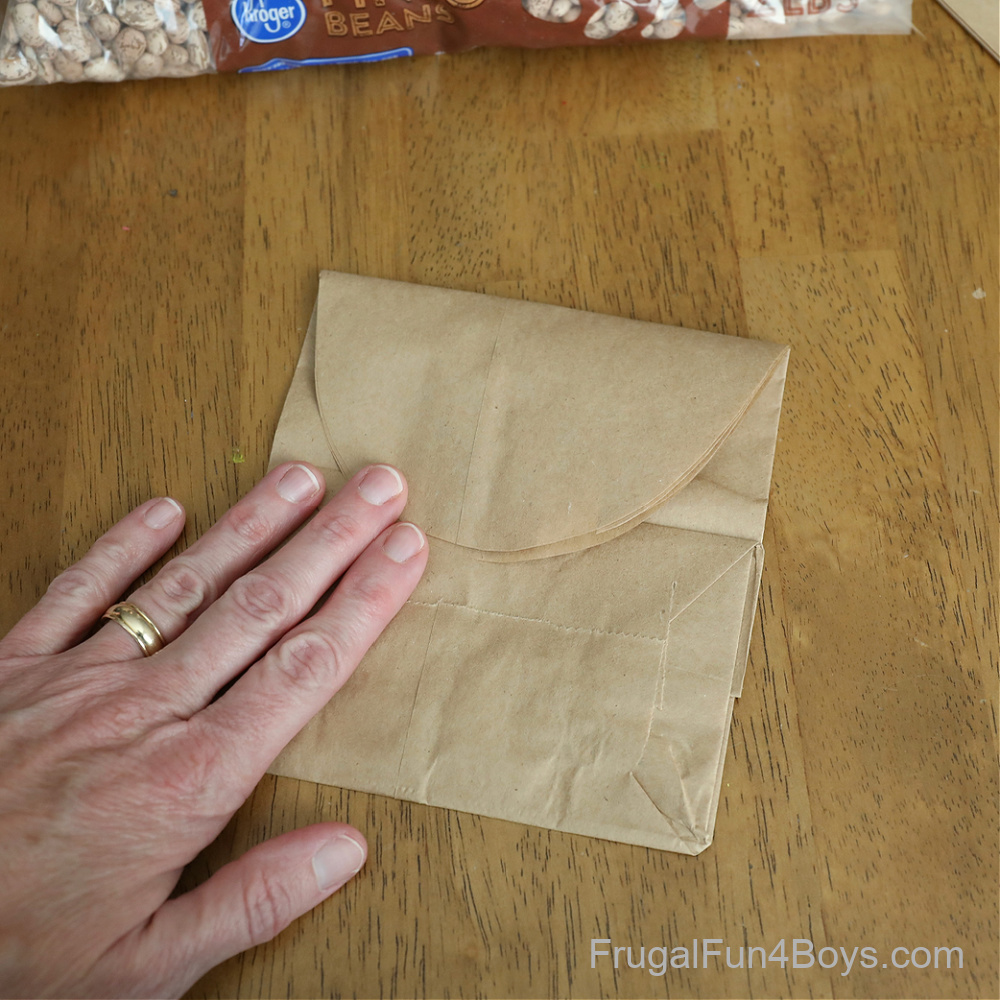
Step 4: Put some pinto beans inside the bag. Then glue on the eyes, beak, and wattle.
I weighed my turkeys as I was going along because I wanted to make sure I had a variety of weights. But you can choose your approach!
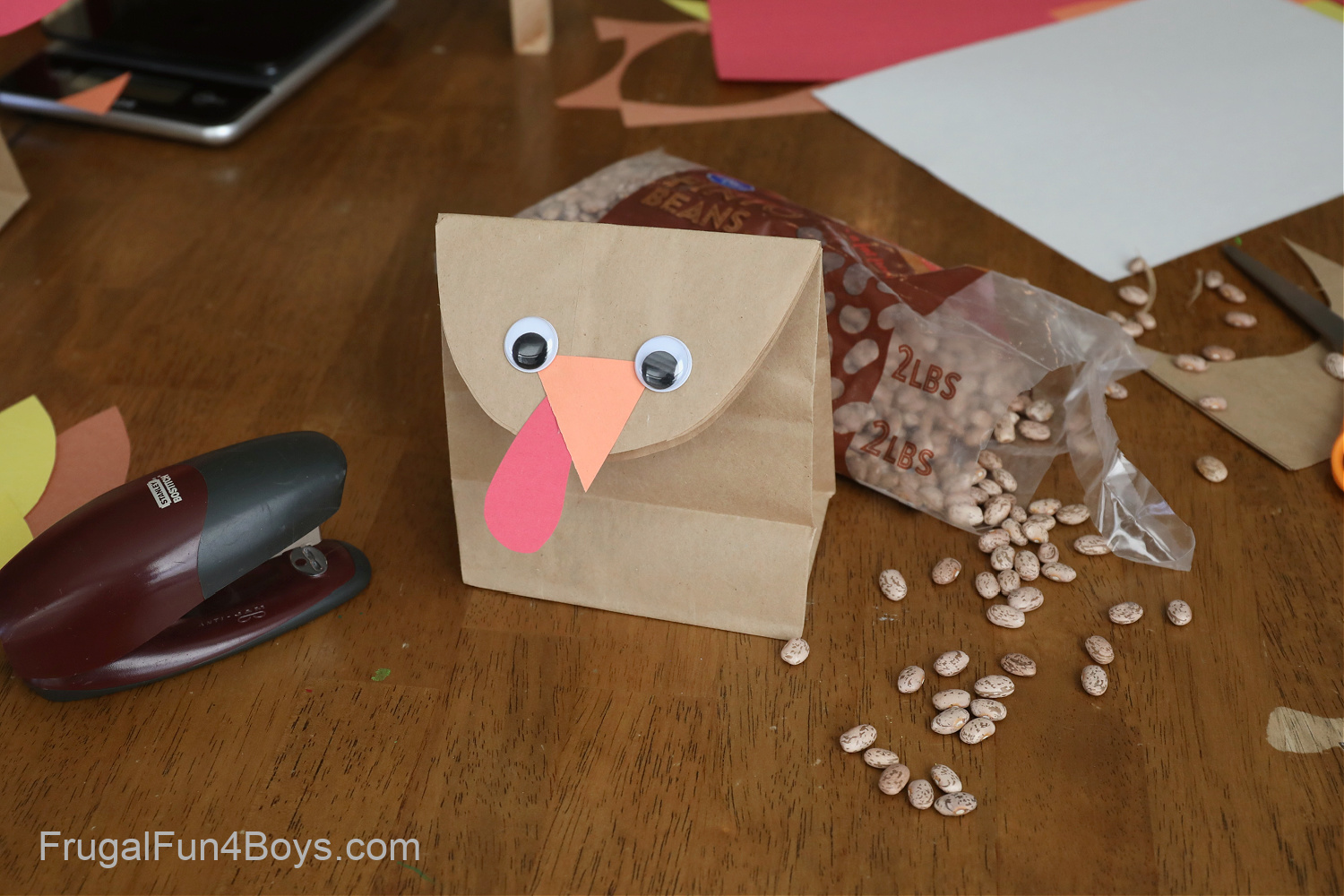
Step 5: Staple the bag shut. Then glue on the feathers, and your turkey is complete!
Create different heights for your turkeys by folding the bags in different places.
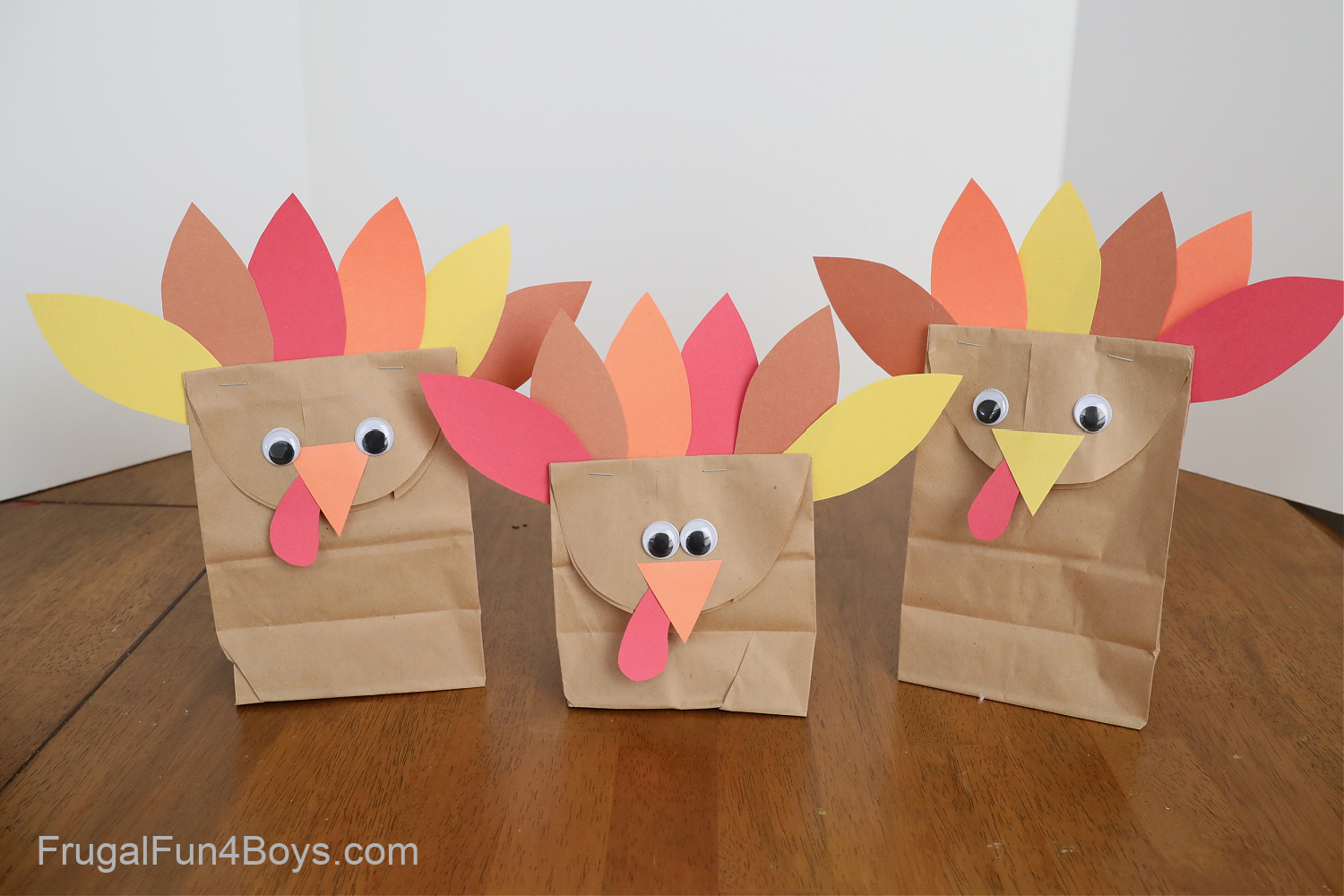
How to Weigh and Measure Your Turkeys
I labeled each of our turkeys 1-5 on the back of the bags.
Then I made a quick chart for us to fill in as we weighed and measured each turkey.

For the height measurement, we chose to measure to the top of the body (the top of the bag). This is much easier than measuring to the top of the feathers.

We measured the turkeys’ height in centimeters and their weight in grams.
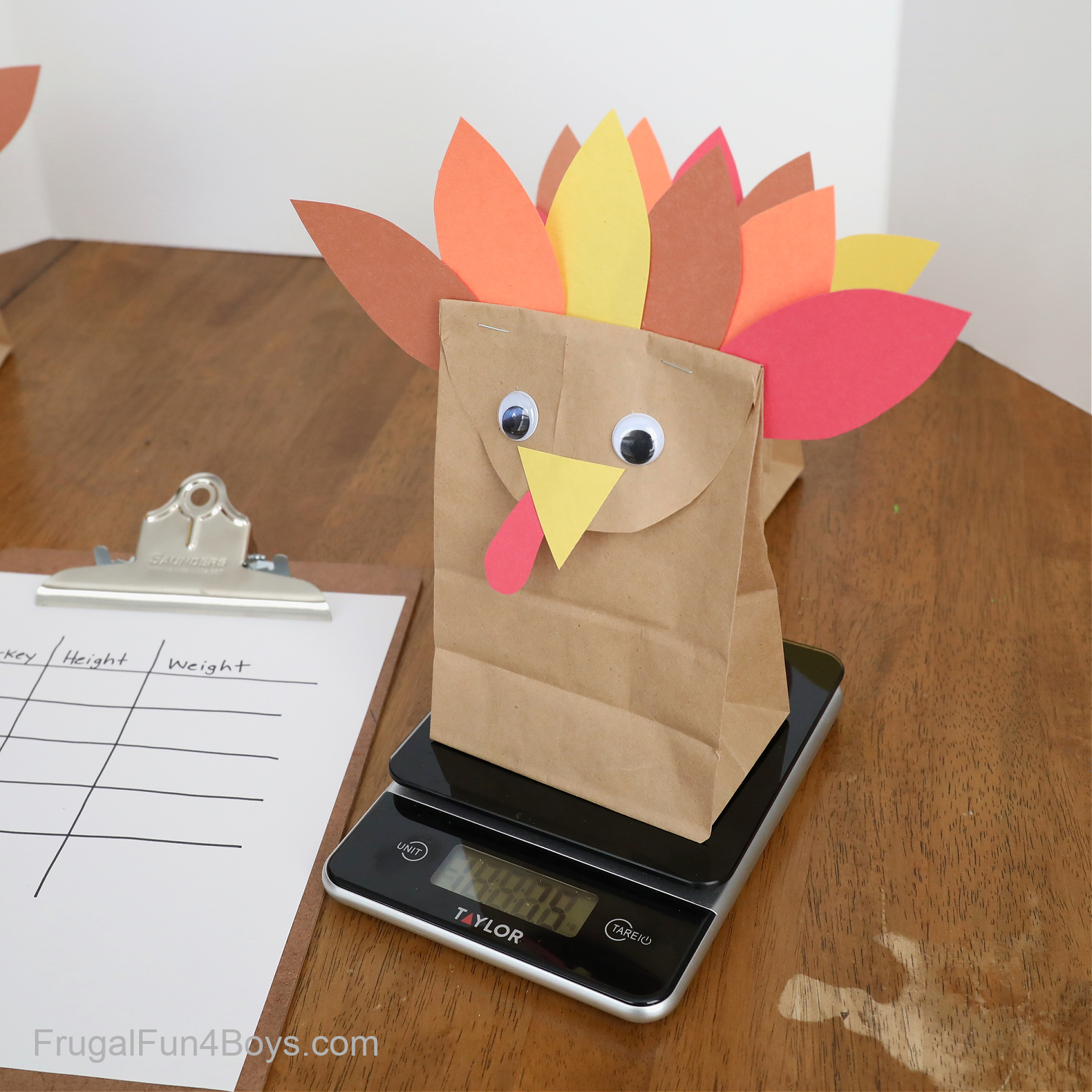
Then we had fun lining up the turkeys from shortest to tallest!
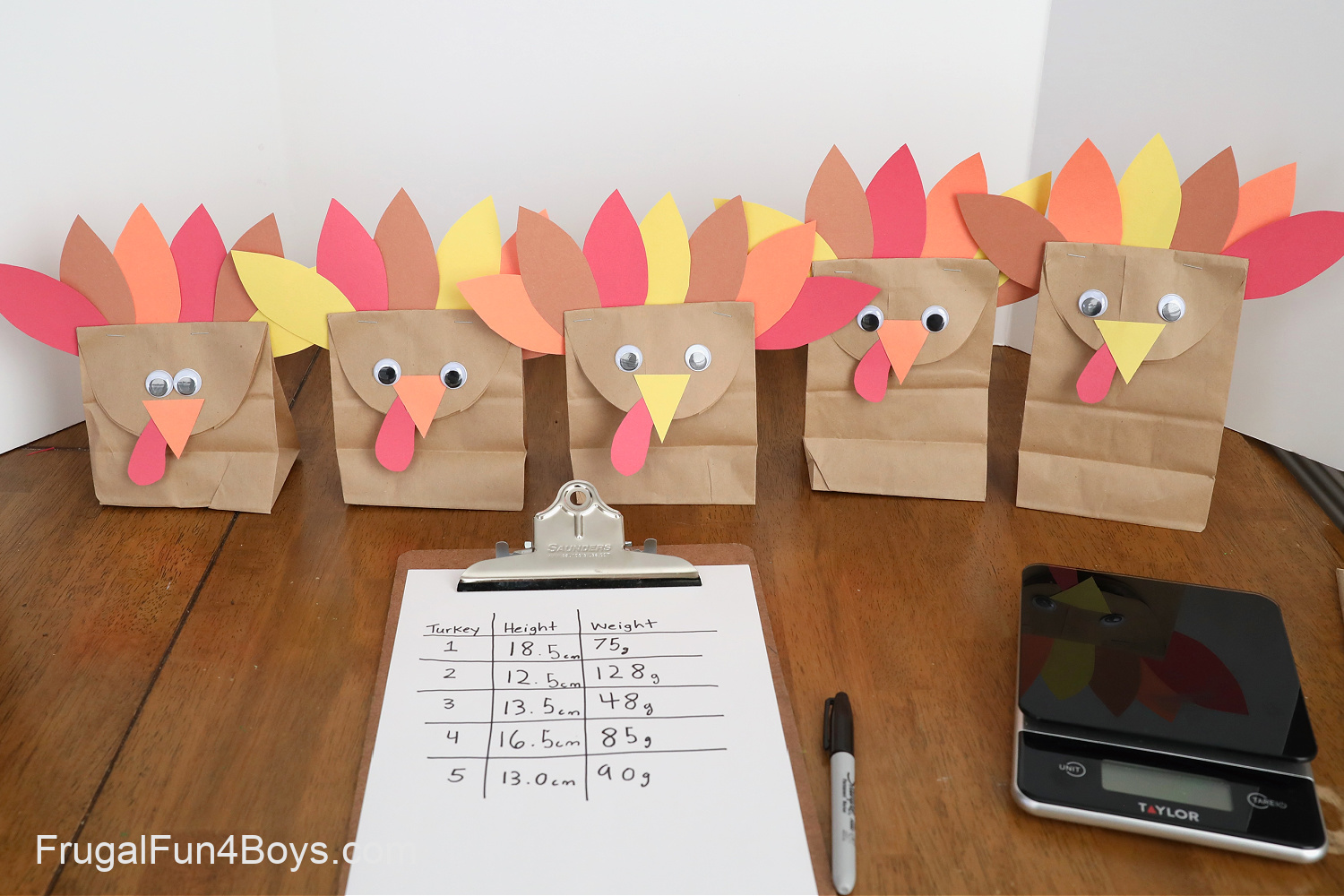
And lightest to heaviest. Again, I made sure that the weights and heights did not match up with what would be expected! My daughter giggled at which one was the heaviest.
She pretended she was doing checkups on all the turkeys. So fun. 🙂
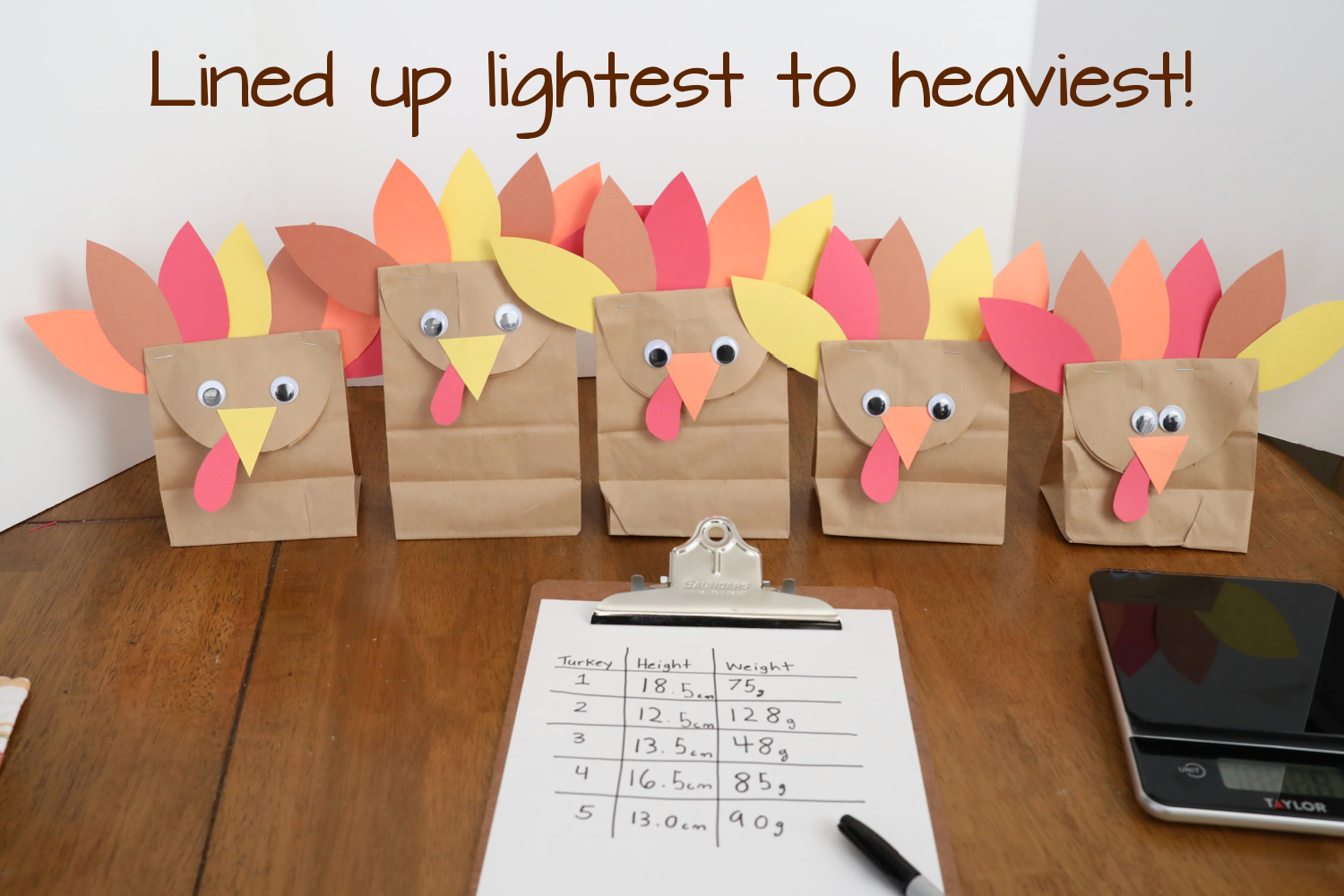
How to Differentiate this Thanksgiving STEM Activity for Learners at Different Levels
This math activity is so easy to adjust so that it’s easier or more difficult! Here are some ideas.
- Larger differences in weight and height will be easier for young kids to appreciate. Make the activity harder by making the height and weight differences small. A difference of half a centimeter (or less) requires more detailed measuring than a difference of two centimeters.
- To practice decimals, simply change your scale to kg instead of g. Then kids will be writing down 0.128 kg instead of 128 g. Comparing decimals is a fifth grade skill.
- Make the turkeys ahead for younger students. Have older ones create the turkeys themselves.
- Challenge advanced students to make a bar graph of the results.
Want more Thanksgiving STEM Activities?
Try making butter in a jar! This is fun and DELICIOUS!
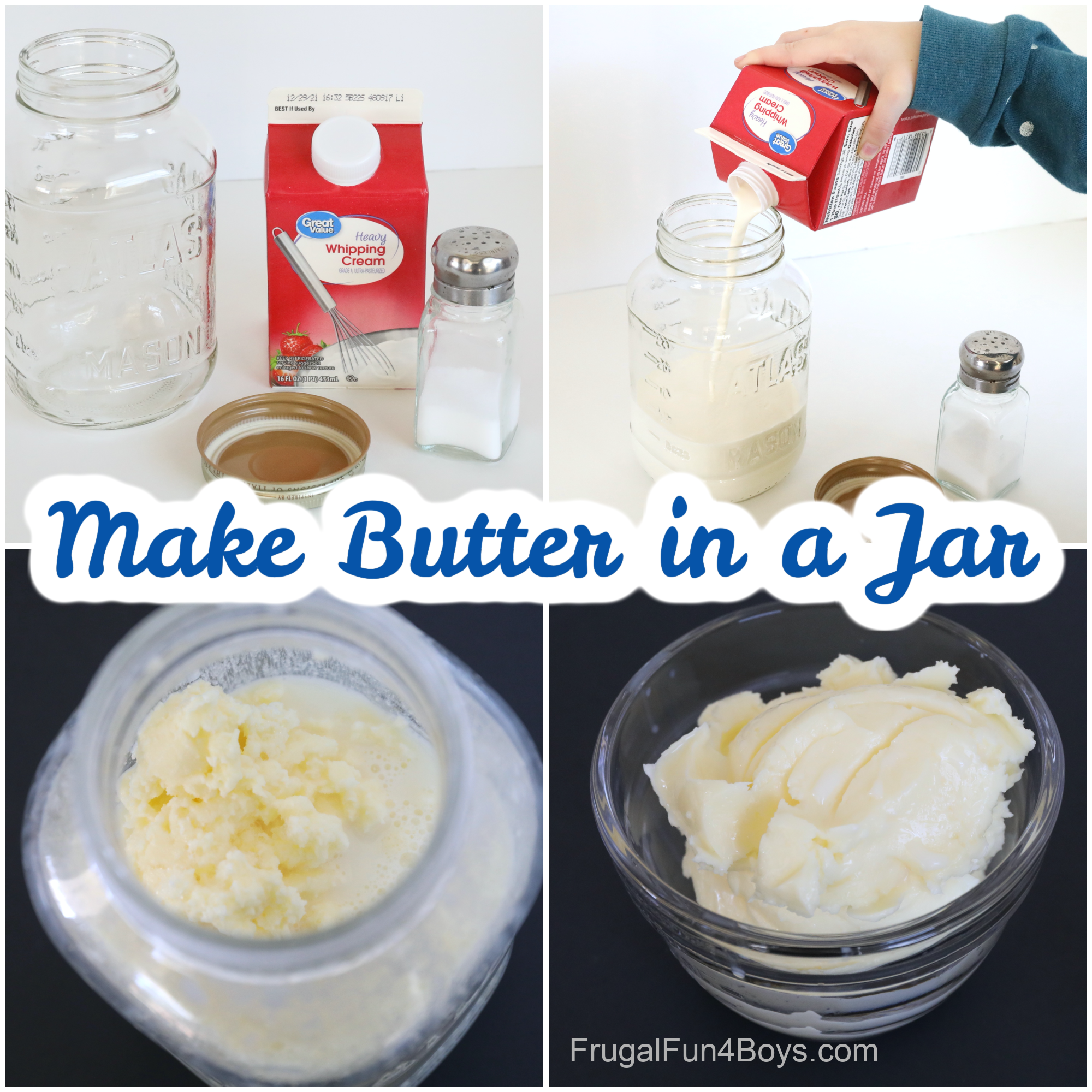

0 Comments
Post a Comment